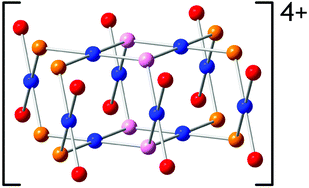Structures of polynuclear complexes of palladium(ii) and platinum(ii) formed by slow hydrolysis in acidic aqueous solution†
Abstract
The aqua ions of palladium(II) and platinum(II) undergo extremely slow

* Corresponding authors
a
Department of Chemistry, Swedish University of Agricultural Sciences, P.O. Box 7015, SE-750 07 Uppsala, Sweden
E-mail:
ingmar.persson@slu.se
b Department of Chemistry, Lund University, P.O. Box 124, SE-221 00 Lund, Sweden
c Institute of Physics, University of Tartu, 4 Tähe Str., EST-51010 Tartu, Estonia
The aqua ions of palladium(II) and platinum(II) undergo extremely slow

 Please wait while we load your content...
Something went wrong. Try again?
Please wait while we load your content...
Something went wrong. Try again?
N. Torapava, L. I. Elding, H. Mändar, K. Roosalu and I. Persson, Dalton Trans., 2013, 42, 7755 DOI: 10.1039/C3DT32859G
To request permission to reproduce material from this article, please go to the Copyright Clearance Center request page.
If you are an author contributing to an RSC publication, you do not need to request permission provided correct acknowledgement is given.
If you are the author of this article, you do not need to request permission to reproduce figures and diagrams provided correct acknowledgement is given. If you want to reproduce the whole article in a third-party publication (excluding your thesis/dissertation for which permission is not required) please go to the Copyright Clearance Center request page.
Read more about how to correctly acknowledge RSC content.
 Fetching data from CrossRef.
Fetching data from CrossRef.
This may take some time to load.
Loading related content
